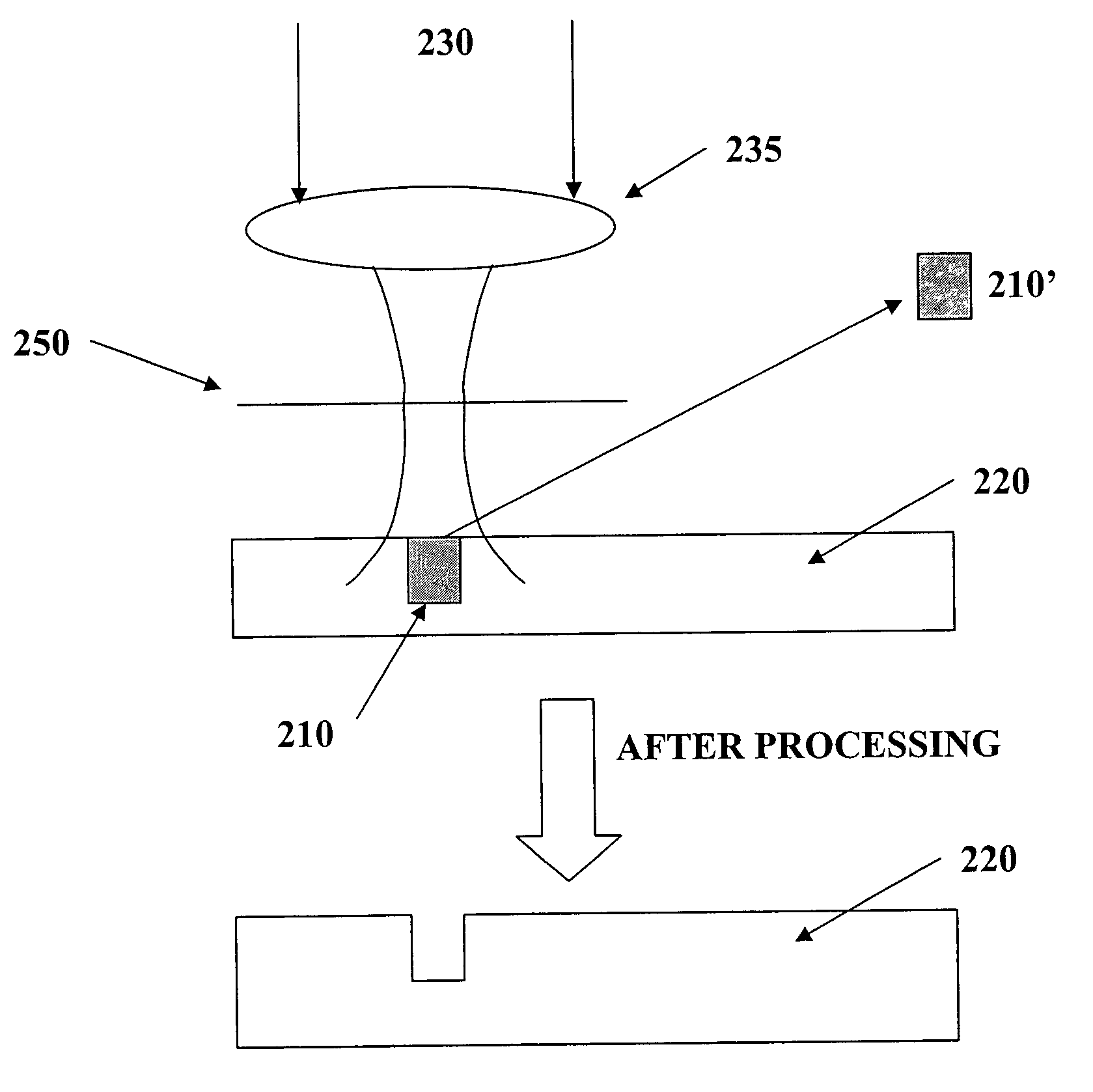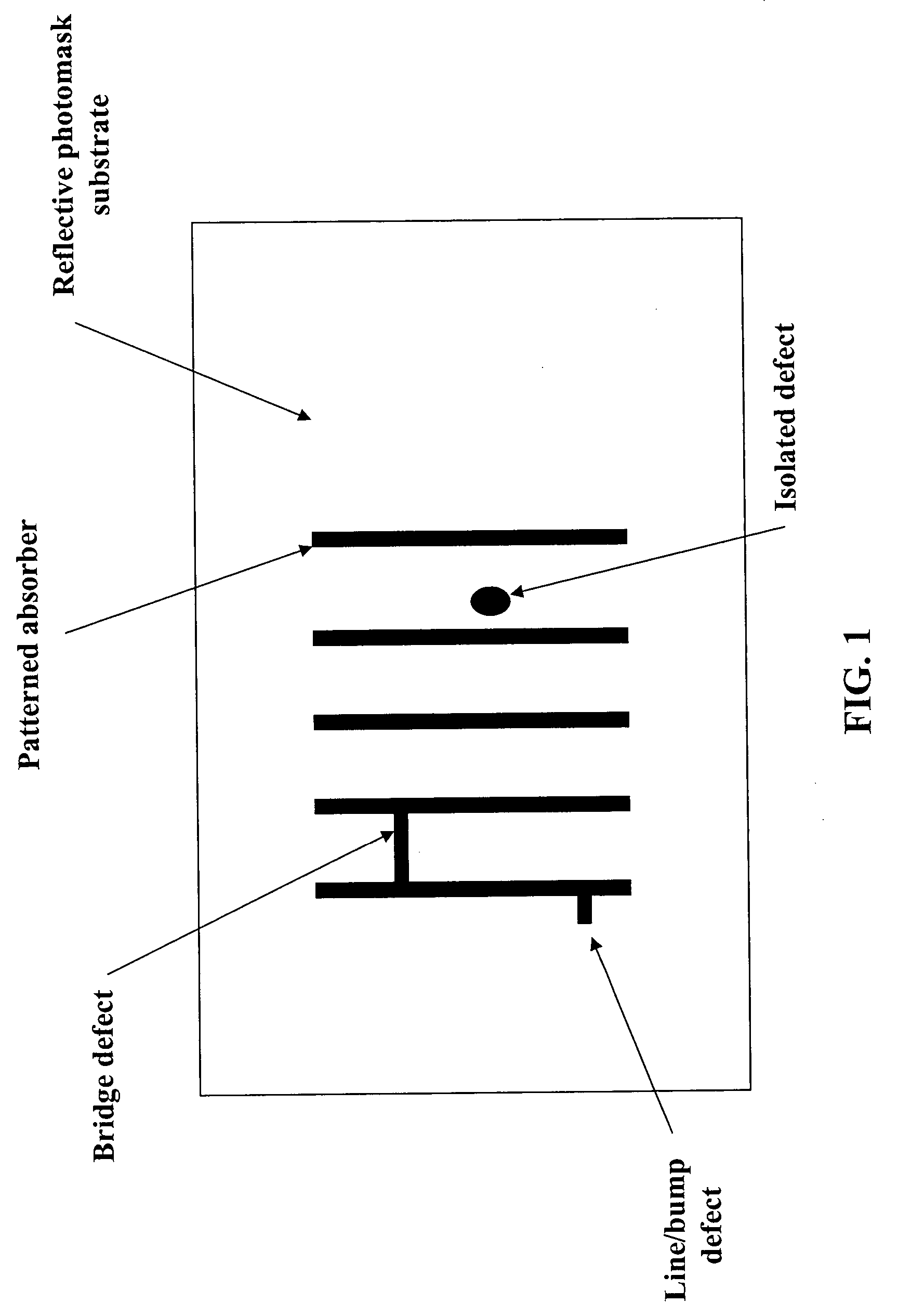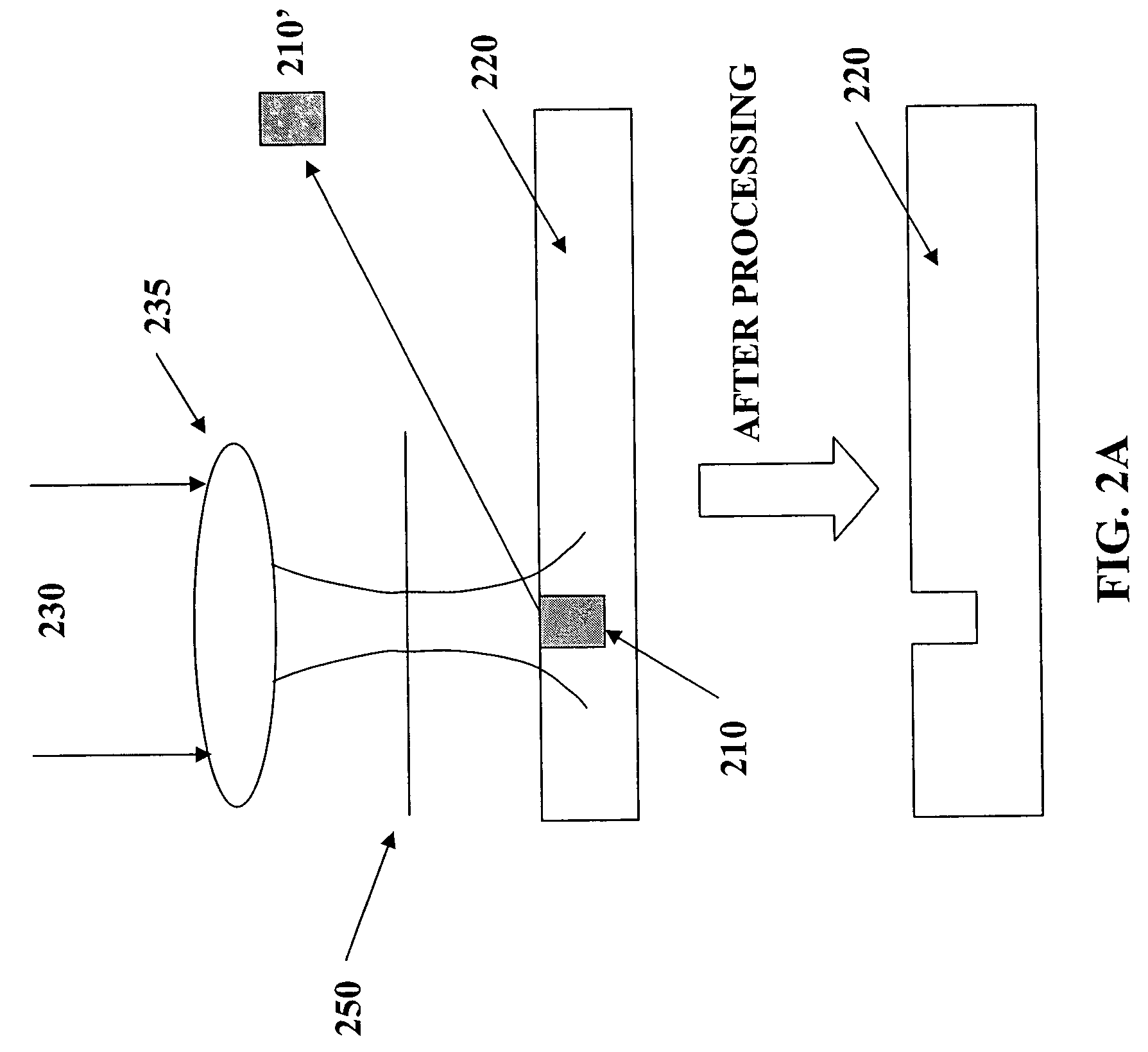Method and apparatus for repair of reflective photomasks
a technology of reflective photomasks and repair methods, applied in the field of laser light removal apparatus and methods for removing materials, can solve the problems of reflected wavefronts from each interfaces that are constructively interfering producing constructive interference in the backward or reflected direction, and defects that are therefore frequently encountered
- Summary
- Abstract
- Description
- Claims
- Application Information
AI Technical Summary
Benefits of technology
Problems solved by technology
Method used
Image
Examples
Embodiment Construction
[0028]It should be noted with the disclosure herein that the use of prepositions, such as “on”, “over”, and “under”, are defined with respect to a planar surface of the mask, regardless of the orientation in which the mask is actually held. A layer may be considered to be “on” another layer even if there are intervening layers.
[0029]The method of one embodiment of the invention ablatively removes specific material using ultrashort pulses of laser light. By tuning the laser output wavelength to match or be set within a specific offset of a wavelength specific absorption of the material that is desired to be removed, discrimination between this particular material and adjacent desirable materials, all or part of which may be embedded in a matrix, can be achieved.
[0030]For example, and with reference to FIGS. 2A and 2B, if a first material 210 possesses an atomic core level at energy E1, and if a second material 220 possesses an atomic core level at E2, by tuning the wavelength of ultr...
PUM
| Property | Measurement | Unit |
|---|---|---|
| reflectivity | aaaaa | aaaaa |
| reflectivity | aaaaa | aaaaa |
| reflectivity | aaaaa | aaaaa |
Abstract
Description
Claims
Application Information
 Login to View More
Login to View More - R&D
- Intellectual Property
- Life Sciences
- Materials
- Tech Scout
- Unparalleled Data Quality
- Higher Quality Content
- 60% Fewer Hallucinations
Browse by: Latest US Patents, China's latest patents, Technical Efficacy Thesaurus, Application Domain, Technology Topic, Popular Technical Reports.
© 2025 PatSnap. All rights reserved.Legal|Privacy policy|Modern Slavery Act Transparency Statement|Sitemap|About US| Contact US: help@patsnap.com



